While you are here, be sure to join my SAT email list to get my Urgent Report on SAT Reading and other subscriber-only content and bonuses!
Many people ask themselves, “How can I read faster?,” but just don’t know where to start. If you’re really stuck at your current level, you may even doubt that speed-reading is a real thing, since you’ve never experienced it yourself!
Don’t worry – I’ve found several ways to help you read faster. Daily personal reading time, ceaseless vocabulary building and practice with proven speed reading software are three of the most effective ways to read faster, but I also have some additional personal strategies that I use.
My natural reading speed is about 700 WPM and can jump up to 1200 WPM when necessary; the average reading speed is in the range of 150-250 WPM.
Here are some of my personal tips on how to read faster.
If you think of talking and reading as similar skills, you are slowing yourself down.
Reading and talking are two separate skills, with different limits to their speeds. You can read much faster than you can talk.
You can read much faster than someone else can talk to you.
You can read faster than the news anchor can talk.
Get Exclusive SAT Prep Tips!
I want to send you more tips to help your SAT score, but I need your email address to stay in touch. Enter your email below so I can send you my reports on the SAT and other subscriber-only bonuses.
Don’t you think asking yourself “How can I read faster?” is totally different than asking yourself “How can I talk faster?” Right. So don’t limit yourself by imagining reading as a visual version of talking.
Reading and talking are different skills… So keep them separate; don’t read like you’re talking out loud to yourself. That’s a bad reading habit called “subvocalization” and Ace Reader can help you break it so that ultimately you become a faster reader.
Wondering “How can I read faster?” Learn to skim.
Learn to skim (particularly important for reading tests like the SAT and ACT)! Take cues from the context about the importance of the sentence you’re reading. Are you getting some seriously important plot development here, or is the narrator simply describing a slug trail, or riding her bike home?
I often skim description and excess adjectives; Certain common phrases get re-used so many times that I don’t feel like reading them word-for-word every time.
Seriously – what if I come to a passage like: “The dark and stormy night was gloomy and scary. It was cold out, and raining. Jessi was scared of ghosts. Everything was just so scary and dark. She thought about her friend. ‘Rest in peace,” she thought.”
IT’S SO FULL OF CLICHÉS AND BAD WRITING THAT I’M DEFINITELY NOT WASTING MY TIME “SAVORING” IT!!
How can I read faster in this case? I’m definitely going to skip the boring stuff. I’m just going to get the concept out of there… “ok… it’s dark and raining, and this character is scared.”
I don’t owe it to the author to read every word of their writing, so I skim for what interests me or answers my questions.
Of course, this also requires you to have a strong vocabulary to understand which concepts can be skimmed and which must be read slowly and carefully.
Let your eyes move quickly and perceive “concepts” instead of “words.”
Sometimes I even find myself reading the “afterimage” of words that my eyes have already moved beyond.
I’m talking very short-term memory here, on the scale of an eyeblink.
Think about if you were the passenger in a car, driving past a long succession of road signs with short slogans – maybe 4-5 words each – which you are reading one word at a time as you drive by.
The signs are really interesting, but obnoxiously, your driver kept speeding up. Your eyes and head start to feel more and more sore as you try frantically to jump from one individual word to another, from sign to sign, and process it all, but the driver keeps on speeding up and speeding up!
“HOW can I read faster and see what these signs are trying to tell me?” you ask yourself, with no hope of an answer….
And then… it’s right when you’re on the verge of giving up… that you suddenly relax and are stunned to see that instead of seeing word after word after tormenting word… Instead of a blur as your eyes try to trace over the slogan from left to right… You’re now seeing the SIGNS, instead of the WORDS.
Though your driver is now going full-speed, the slogans suddenly seem to be lazily moving past you at a third of their previous speed. You are perceiving clusters of words now – instead of reading 60 words, you just read 12 signs by taking them all in at a glance.
You’re reading concepts now, not words… And any written information will have far LESS concepts and far MORE words… So it feels like you’re doing much less reading to read for CONCEPTS, instead of WORDS!
If you’re asking yourself “How can I read faster?” or “How can I get through all these words?“, try flipping the question and asking “How can I get through all these concepts?” Suddenly you’ll have a lot less reading on your plate.
Check out Ace Reader for a good way to train and practice this skill in software form.
Keep your personal goal in mind – what is your reading objective?
If you’re reading for the SAT: Get the main idea and tone, note main arguments and topics, get an idea of what the author, narrator, and/or main characters are like. Big-picture comprehension, vocabulary, and speed are most important if you’re going for a perfect 800 on SAT Reading.
If you’re reading for personal enjoyment: You get to set the pace; savor every word, reread entire chapters before going on, read the last sentence of the book before starting it from page one (I did this for years.. it often made for a very cryptic and enjoyable reading experience!).
You might visualize the characters interacting like in a movie, or simply let them live as words on the page, complete as themselves. In other words, the ability to read more quickly is unnecessary, even if you can read faster.
If you’re reading the news: The facts aren’t the only important thing; a reader has to keep a keen critical eye on the views and potential biases of the reporter and the newspaper, which requires a particularly careful eye for tone and a readiness to make one’s own separate conclusions while reading.
You get the idea… If you read with a specific purpose in mind, you will already bring more focus, speed, and even passion to the table.
How can I read faster? With practice!
As always, practice makes perfect, and one of the best ways to get faster at reading is simply… to read great books!
So, check out this collection of reading lists for some great book ideas – I guarantee you’ll find dozens of titles that are perfect for you!
Enroll in my Conquer SAT Vocabulary video course and check out my Ace Reader review for software that can help train your speed-reading skills.
Further Reading:
Is Speed-Reading Real?
How to Learn Speed-Reading
How to Beat Time-Limit Pressure on the SAT
How to Get a Perfect Score on SAT Reading
Good Free-Reading Lists for High Schoolers
Additional Resources:
Conquer SAT Vocabulary Video Course
Ace Reader Speed-Reading Software Review
Before you go today, be sure to join my mailing list to get my Urgent Report on SAT Reading and other exclusive content just for subscribers!

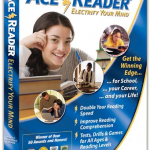

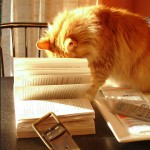








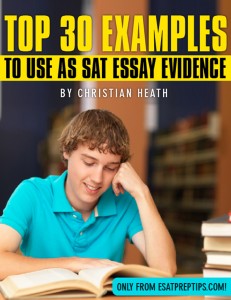


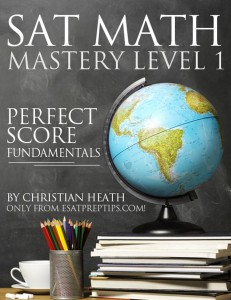
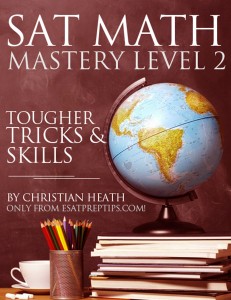
[…] everyone worries about reading speed and SAT vocabulary, but not enough people spend time thinking about and practicing their SAT […]